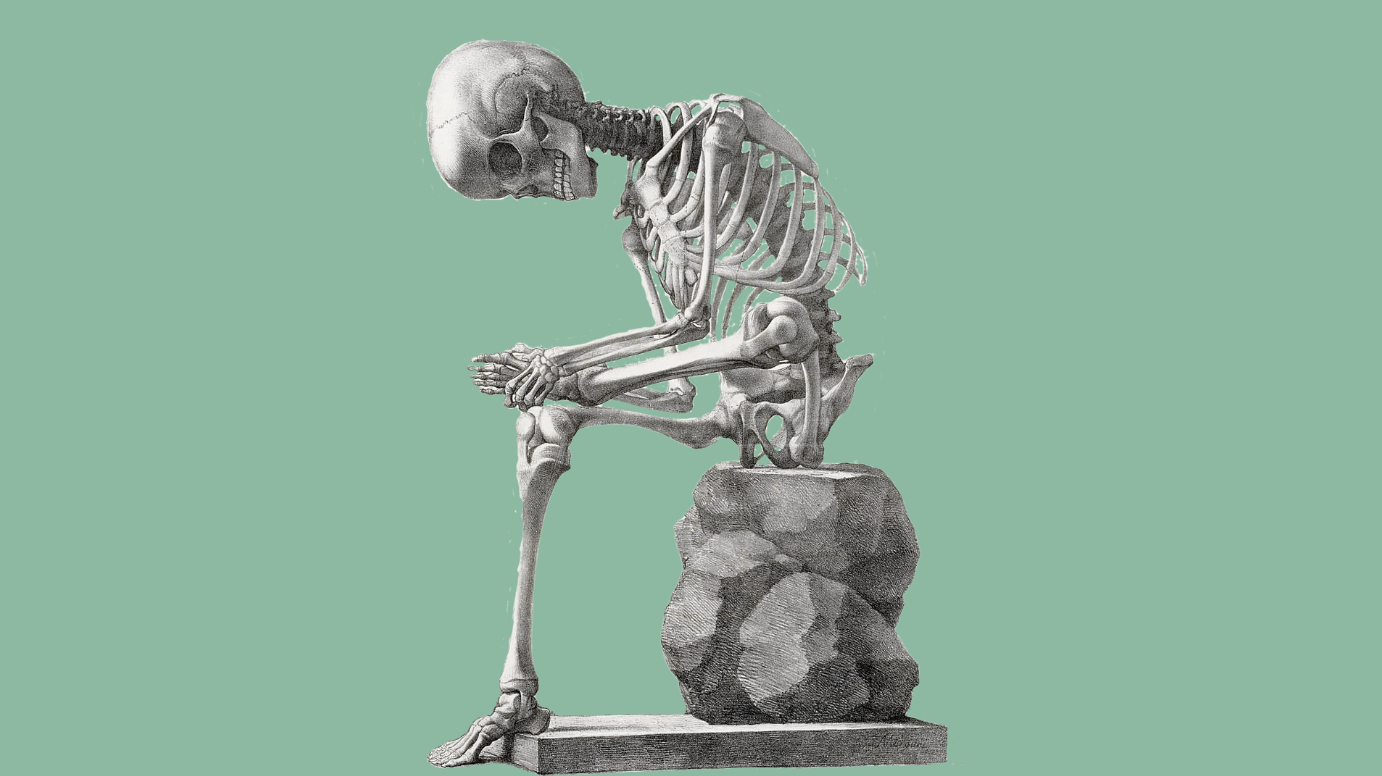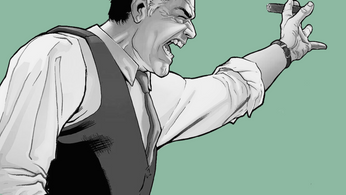
The management tool too many newsrooms lack
A career ladder is a roadmap to promotion.
Skip ahead
"We don't really get promoted in journalism," a friend lamented in a group chat where with others in finance, government or marketing, we compared our career paths. He wasn't wrong: in one longitudinal study of the media market in Seattle, nearly 40% of professionals surveyed in 2015 were in exactly the same role in 2021. Another 30% had left the industry. Just 16% had seen career progression within journalism in those 6 years. (For comparison if comparison there can be, over the same period in a fast-growth tech company, I was promoted five times.)
Keeping a job in journalism for six straight years might seem lucky, but it's not good enough. Our people deserve career progression and our organisations will be all the better for holding onto and developing our best talent. To do that, I've yet to come across a better or simpler tool than the humble career ladder. So today for a very practical management lesson is the first of two articles. First, let's dive into the elements of good career ladder design and later, we'll explore how to dramatically improve newsroom leadership with a two-track ladder – or better yet, a jungle gym.
What is a career ladder?
A word of apologies to people who've worked in professional organisations and think this is beginner-level management. It is. You can skip this article, just scroll down for other things to read. But I only heard of a career ladder when I joined a tech company after working in four newsrooms. A cursory survey of my journalism network tells me I wasn't alone. This article is for them.
A career ladder is a simple description of the levels available in a team or department, laid out as a vertical progression and demonstrating how people can move up to the next rung. Unless tiny, most media companies will have multiple ladders: one for journalists, one for commercial teams, one for software engineers, etc. The ladder spells out in broad terms the responsibilities of each role, but it's not a job description. (A national reporter and a restaurant critic might be on the same rung on the career ladder but have very different job descriptions. Conversely, a reporter and a senior reporter on the politics beat might have similar job descriptions but bring to them different levels of expertise and effectiveness justifying a difference in title and salary.) The true focus of the career ladder is in explaining to employees seeking advancement and managers making advancement decisions what criteria they are judged on. It's not about what your responsibilities are in that job, but what you need to do to get to that level. What skills must you develop? What achievements must you demonstrate? What personal qualities must you nurture – or rein in? A career ladder is a roadmap to promotion.
Let's get concrete. On my old team, the individual contributor editorial ladder looked like this: associate editor > news editor > senior news editor > editor-at-large > senior editor-at-large. It's a crapshoot what titles mean in each news organisations, so make it work for you. Titles are easy. The real work is filling in what comes below.
What should a career ladder say?
Beneath each title, you should fill in the following rubriques.
- Role guidelines: Without going deep into a job description, describe the shape of this role. For instance, for the bottom of the ladder, it might say:
- entry-level learning role
- general supervised editing
- contributes to successive projects as tasked
For a senior editor, it may say instead:
- expert in their field
- owns multiple projects or complex beat
- impeccable news judgement, makes editorial decisions unsupervised
- Hierarchical level: Where does this role sit in the broader company grid? Each team or department will have its own career ladder, but you should be able to compare experience and responsibility levels across the company. For instance, in the ladder above, associate editor was a individual contributor level 2, just like an associate product manager or an associate marketing manager. (Graduates would be level 1, senior VPs level 8.) This matters more in larger organisations, but having equivalencies helps with lateral career moves (more on that in the next article) and with potential hierarchical tussles across departments.
- Salary range: To each hierarchical level corresponds a salary range. HR will have that information. I'm a big fan of sharing it openly. It keeps management honest and saves the company from deleterious gossip. If you're going to publish salary ranges for external hiring (and increasingly you're forced to), you might as well publish them for internal progression as well. It steers you away from a common pitfall – new hire salary ranges growing faster than internal raises. You don't want to lose your best talent just because you haven't kept their salary at market rates. One caveat: ranges will vary across departments and thus ladders. You won't find an entry-level software engineer for the price of an entry-level reporter. The discrepancy is fine, as long as you can explain it.
- Expected time in role: Of course, promotions are contingent on budgets and space in the organisation. That said, employees should have a rough sense of how soon they can expect a promotion if they do everything below.
- Individual guidelines: This is the meat of your career ladder. It should detail the behaviours and contributions you expect from an employee at that level. Think back to people who've been successful in this role: how did they show up? Enlist your managers and even the whole team for suggestions. It needn't be an edict.
What does an editorial career ladder look like?
Again, let's get concrete. Here are (summarised and simplified) guidelines for one of my roles at LinkedIn.
Ladder (manager track)
Lead news editor > Managing editor > Senior managing editor > Executive editor (director) > Executive editor 2 (senior director) > Editor-in-chief (VP)
Title
Executive editor
Level
Manager level 5
Role guidelines
- Manages a team of managing editors
- Scales a team & builds future leaders
- Owns multiple editorial lines of business
Individual guidelines
- Sets product vision and strategy
- Embodies culture and values
- Achieves consistent high scores for 360° feedback
- Recognised as a strong mentor and cross-functional partner, makes others feel part of a team
- Transforms the career trajectory of multiple team members; has hired, developed, promoted and retained top performers; bats far above average in hiring decisions
- Manages performance effectively and consistently; can manage with minimal oversight
- Effective participant and presenter in internal executive meetings
- Able and willing to resolve interdepartmental and interpersonal conflicts
- Creates and drives standards for departmental, cross-functional and company-wide communication and collaboration
- Excellent story editor; opens doors for top-level interviews
- Able to spot long-term trends and put plans in place to stay ahead of them
- Successfully puts into place structures that give the rest of the team more leverage
- Successfully uses data to drive strategy; teaches others how to
- Consistently makes tough calls on priorities and balances demands of the team
- Clear, metrics-backed results in multiple lines of business
- Consistently delivers above expectations
I've built a career ladder. Now what?
Early in my career, maybe 9 or 12 months into a role, I asked my editor-in-chief for a meeting. I had an idea to pitch, something to expand my role where I was already starting to feel the walls. I forget what I asked, it wasn't more money, but I'll never forget the response: "Isabelle, I can tell you're ambitious. But you're gonna have to learn to be patient."
My boss was probably right but I left frustrated. "Wait your turn" doesn't appease or focus a hungry 25-year-old. "Wait your turn, but here are the opportunities ahead and what you need to work on to get there" might. A career ladder is essential to retain and motivate your most go-getting staff. It gives managers and employees something tangible to work from in career conversations. It's a good way to track succession planning, too. If you're a manager and you don't see anyone moving up the ladder behind you, worry.
The process also brings much needed transparency and fairness to career advancement. Titles and salaries should stand on more than forceful negotiating tactiques and chummy relations with the boss. Transparency in turn fosters greater diversity in the upper echelons of newsrooms. Advancement based on open and measurable criteria favour those who are good at their job, but not necessarily at tooting their own horn or squeezing money out of a tight purse. For managers, it's a reassurance that their judgements are fair and factual.
This only works, however, if two conditions are fulfilled.
First, the career ladder is broadly distributed. It should be part of every employee's onboarding documents. It should be the basis of every career conversation and frequently referred to when giving performance feedback. The ladder isn't a tool for HR and managers to organise their team. It's a map for employees to navigate their own careers.
Second, promotions actually happen. Don't make empty promises. Once an employee has fulfilled all requirements in the ladder, they should be promoted within a reasonable timeframe. Promotions are contingent on budgets and organisational needs, sure, but that can't last years. If there is nowhere for them to go in the organisation, be honest... and be ready to backfill that role.
Next: The two-track career ladder or how to stop sending the wrong people into management.
Tell me: How do career ladders work in your media org? There are dozens of ways to design them, this is just mine. I want to hear about yours. Just reply to this email.
Marginalia
- How do you create a more transparent, accountable and caring work culture in newsrooms? Jennifer Mizgata released a free six-week, email-based course on just that, which she built as a Reynolds Journalism Institute fellow at my alma mater (M-I-Z!) It's still on my to-do list but I can recommend it eyes closed because Jennifer is so thoughtful on these issues.
- I found the perfect job ad.
- Middle management is lonely. Find your people.
- Adam J. Davidson of Planet Money fame explains why he's left journalism. Telling illustration of how poor organisational culture drives even successful journalists away. Also a hopeful note on what fascinating portfolio careers are possible after newsrooms.
- Another "Why I left" piece... Mia Lobel, formerly of Pushkin Industries, on burning out amid the explosive growth of podcasts
- "New generation, new rules: how to manage a newsroom?" I am very much looking forward to this panel in Perugia on Thursday 18 April. If you're not traveling to Italy with half the European news industry, it'll be available on livestream and replay.
- "Are you in the portal?" I'm turning 40 tomorrow. The last few years have been a chaotic, creative, enriching, frustrating mess. I keep coming back to this piece by Anne Helen Petersen. It's not about leadership, except it sort of is. You should read it.
Hey, you read to the end!
Don’t miss future articles like this one; let me into your inbox.







